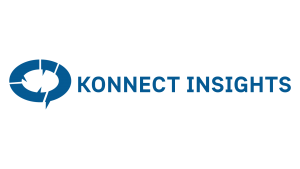In today’s digital age, social media has become an integral part of our lives, serving as a platform for communication, information sharing, and self-expression. As per statistics, users, on average, spend about 2 hours and 27 minutes per day on social media.
This translates to an immense amount of data that businesses can use to generate actionable insights. For instance, businesses can use social media data to get a deep understanding of consumer behavior, market trends, and brand perception. This helps them develop strategies to improve their products and services.
This is where social analytics comes into play. By leveraging advanced data analysis techniques, organizations can unlock actionable insights from social media data to enhance their marketing strategies, improve customer experiences, and strengthen their competitive edge.
Introduction to Social Analytics
Notable social media data figures:
- Over 75% of the global population that is older than 13 years uses social media.
- 50% of Instagram users say that they have visited a brand’s website after viewing their stories (It is Gen-Z’s favorite social media platform).
- Facebook generates 4 petabytes of data per day (1 Petabyte = 1000000 gigabytes).
- LinkedIn has 930 million members in more than 200 countries and territories.
- Globally, Snapchat reaches 75% of the Gen Z and millennial populations.
Thus, we can see that the sheer amount of social media data being generated is overwhelming. There is an urgent need to analyze this data and extract actionable insights that can be used to gain a competitive edge. This is where social analytics play an essential role.
Social analytics refers to the process of analyzing social media data to identify patterns, trends, and insights that can be used to support business objectives. It involves the collection of data from various social media platforms, such as Facebook, Twitter, Instagram, Snapchat, LinkedIn, TikTok, and others.
This data is analyzed using various analytical techniques, such as sentiment analysis, text mining, and machine learning, to generate useful insights.
Watch out: Top 7 Social Analytics Trends 2023
Significance of Extracting Actionable Insights from Social Media Data
The goal of social analytics is to gain an understanding of how customers use and perceive a brand, product, or service. This allows businesses to make better decisions and create effective marketing strategies. This leads to improved customer engagement, increased sales, and high business performance.
Understanding Social Analytics
It is imperative to have a clear understanding of social analytics before delving into it. Social analytics can be understood by its evolution, components, and the different types of analysis that can be performed on social media data.
Evolution of Social Analytics
The field of social analytics has undergone a significant evolution, due to the rapid growth and widespread adoption of social media platforms. Initially, social media served as a means of communication and information sharing among individuals.
However, with the explosion of user-generated content on platforms such as Facebook, Twitter, and Instagram, businesses recognized the potential of harnessing this wealth of data to gain valuable insights.
A whopping 93% of marketers worldwide are using social media for business.
Social media platforms gained wide prominence. Organizations began to realize that they could tap into this vast pool of user-generated content to understand customer sentiments, preferences, and behaviors.
This realization led to the emergence of social analytics as a discipline dedicated to systematically analyzing social media data to extract meaningful insights and drive informed decision-making.
Defining Social Analytics and its Key Components
Social analytics is defined as the process of collecting, analyzing, and interpreting data from various social media platforms to derive actionable insights. It involves utilizing advanced analytical techniques and tools to understand and interpret massive amounts of user-generated content, including text, images, videos, and user interactions.
Key components of social analytics encompass data collection, preprocessing, analysis, and interpretation.
Data collection involves sourcing data from multiple social media platforms, utilizing APIs (Application Programming Interfaces), web scraping techniques, or partnerships with data providers.
The collected data is preprocessed to ensure data quality, remove noise, and transform raw data into a format suitable for analysis.
During the analysis phase, various techniques are employed to extract valuable, actionable insights from social media data. These techniques include sentiment analysis, topic modeling, and social network analysis.
The final component of social analytics is the interpretation of the insights derived from the analysis. This involves translating the findings into actionable recommendations that can drive strategic decision-making within organizations.
Importance of Social Analytics in Business Decision Making
Social analytics play a vital role in shaping business decision-making processes across various industries. Here are some key reasons why social analytics hold significant importance:
- By analyzing social media data, organizations can understand how their products, services, or brands are perceived by their target audience. This Customer Sentiment Understanding helps businesses identify customer pain points, gauge satisfaction levels, and adjust their offerings to align with customer expectations.
- Social analytics enables businesses to Monitor and Analyze Emerging Social Media Trends in real-time, helping them identify opportunities, anticipate shifts in the market, and stay ahead of their competitors.
- Social analytics empowers businesses to refine and optimize Their Marketing Efforts. By analyzing social media data, organizations comprehensively understand their target audience, including their demographics, interests, and preferences. This knowledge enables businesses to tailor their marketing messages, identify effective channels for reaching their audience, and allocate resources strategically.
- Social analytics enables businesses to monitor customer conversations, understand their needs, and address their concerns promptly. This leads to Increased Customer Satisfaction, loyalty, and advocacy.
Extracting Actionable Insights from Social Media Data
The process of extracting actionable insights from social media data can be understood by looking at the following concepts:
Gathering and Preparing Social Media Data for Analysis
The first crucial step in extracting actionable insights from social media data is gathering and preparing the data for analysis. Social media platforms generate an enormous amount of unstructured data, including posts, comments, likes, shares, and user profiles.
There were 4.95 billion active social media users globally (More than half of the world).
Collecting and organizing this data in a structured format is essential for effective analysis. Once the data is collected, it needs to be prepared for analysis through data cleansing and transformation.
Techniques for Data Cleansing and Data Transformation
Data cleansing refers to the process of identifying and rectifying errors, inconsistencies, and missing values within social media data. This step ensures the accuracy and quality of the data before analysis. Techniques for data cleansing involve removing duplicate entries, handling missing values, correcting formatting issues, and standardizing data fields.
Data transformation involves converting the raw social media data into a format suitable for analysis. This includes converting text data to lowercase, removing special characters or punctuation, and tokenizing text into individual words or phrases. Additionally, data transformation techniques involve standardizing data formats, converting timestamps to a unified time zone, and aggregating data at different levels of granularity.
Exploratory Data Analysis for Social Media Data
Once the social media data is cleansed and transformed, exploratory data analysis (EDA) techniques are applied to gain initial insights and identify patterns or trends. EDA involves descriptive statistics, visualizations, and basic data manipulation techniques to understand the characteristics and structure of data.
Descriptive statistics provide summary measures such as counts, averages, distributions, and correlations. Visualizations play a crucial role in EDA by representing data in a graphical format. Basic data manipulation techniques, such as sorting, filtering, and grouping, allow analysts to explore and categorize social media data based on different criteria.
Read more about: How to Leverage Social Analytics Data For Effective Buyer Personas and Personalization?
Analytical Approaches in Social Analytics
Analytical approaches in social analytics take a deeper dive into data to uncover insights and relationships. These approaches involve applying statistical models, machine learning algorithms, or natural language processing (NLP) techniques to social media data. These approaches include:
Sentiment Analysis: Uncovering the Emotional Tone of Social Media Conversations
Sentiment analysis, also known as opinion mining, is a powerful technique that is used to uncover the emotional tone and sentiment behind social media conversations.
Analyzing Sentiment through Natural Language Processing
Natural Language Processing (NLP) techniques play a pivotal role in sentiment analysis. NLP involves the computational analysis of human language, enabling machines to understand, interpret, and generate human language. When applied to sentiment analysis, NLP techniques enable computers to automatically classify text data into positive, negative, or neutral sentiments.
Leveraging Machine Learning Algorithms for Sentiment Classification
Machine learning algorithms are utilized to train models that automatically classify social media data into different sentiment categories. These algorithms learn from labeled training data, where each instance is manually annotated with its corresponding sentiment label.
Supervised machine learning algorithms, such as Support Vector Machines (SVM), Naive Bayes, and Random Forests, are commonly used for sentiment classification. These algorithms learn patterns and relationships between the textual features and their corresponding sentiment labels, allowing them to make accurate predictions on unseen data.
Topic Modeling: Identifying and Understanding Key Themes in Social Media Discussions
In the vast amount of social media data, identifying and understanding the key themes and topics of discussion is crucial for gaining valuable insights. Topic modeling is a powerful technique that enables organizations to automatically discover latent themes and extract meaningful topics from social media conversations.
Latent Dirichlet Allocation (LDA) for Topic Extraction
Latent Dirichlet Allocation (LDA) is a widely used algorithm for topic modeling. LDA assumes that each document in the social media data is a mixture of multiple topics, and each topic is a probability distribution over a set of words. LDA estimates these topic distributions and the word distributions for each topic.
The LDA algorithm works by iteratively assigning topics to words in each document and updating the topic-word and document-topic distributions until convergence. This process enables LDA to discover the underlying topics that explain the content of the social media data.
Coherence Measures for Evaluating Topic Models
Evaluating the quality and coherence of the extracted topics is essential to ensuring the reliability and usefulness of the topic modeling results. Coherence measures provide a quantitative assessment of the semantic coherence and interpretability of the topics. These measures help determine the optimal number of topics and identify models that generate coherent and meaningful topics.
Common coherence measures include pointwise mutual information (PMI), normalized pointwise mutual information (NPMI), and coherence based on topic co-occurrence probabilities. These measures capture the semantic association of the words within a topic and help identify topics that have high intra-topic coherence.
Network Analysis: Unveiling Social Relationships and Influencer Networks
Social media platforms have transformed the way people connect and interact, creating vast networks of individuals. Network analysis is a powerful technique that allows organizations to uncover social relationships and influential individuals within these networks.
Social Network Analysis Techniques
Various techniques are used in social network analysis, including visualizations, network metrics, and community detection algorithms. Visualizations, such as network graphs, display the connections between individuals or entities, highlighting the structure and patterns within the network.
Network metrics, such as degree centrality, betweenness centrality, and clustering coefficient, provide quantitative measures of the importance and influence of individuals within the network. These metrics help identify influential individuals, communities, and hubs within the network.
Community detection algorithms are used to identify clusters or groups of individuals with high interconnectivity. These algorithms help in understanding the sub-communities within the network and uncover distinct social groups, communities of interest, or topic-specific clusters.
Centrality Measures and Identification of Key Influencers
Centrality measures play a crucial role in network analysis by quantifying the importance and influence of individuals within a social network. They help identify key influencers and individuals who play critical roles in information dissemination and network dynamics.
One commonly used measure of centrality is degree centrality, which counts the number of direct connections an individual has within the network. Betweenness centrality measures the extent to which an individual lies on the shortest paths between other individuals in the network. Another important centrality measure is eigenvector centrality, which considers the number of connections an individual has and the quality of those connections.
Visualizing and Presenting Insights
Effective visualization and presentation of insights are crucial for conveying the findings derived from social analytics. Data visualization techniques and interactive dashboards provide powerful tools for representing complex social media data in a clear, concise, and engaging manner.
Data Visualization Techniques for Social Analytics
In the context of social analytics, data visualization enables the exploration and communication of patterns, trends, and relationships within social media data. Some common data visualization techniques used in social analytics are bar charts and line charts, word clouds, network graphs, and heat maps.
Data visualization helps organizations develop a detailed understanding of their customers, identify effective sources of influence in their social networks, and assess how users interact with each other on social media.
Interactive Dashboards for Communicating Findings
Interactive dashboards serve as comprehensive visual interfaces that enable users to explore and interact with social analytics findings. These dashboards consolidate various visualizations and key metrics into a single interface, allowing users to dynamically filter, drill down, and explore the data based on their specific interests or research questions.
Interactive dashboards offer the following benefits for communicating social analytics findings: customization, interactivity, and real-time updates. Interactive dashboards help users customize the interface to suit their preferences and easily identify areas of interest. The interactivity of these dashboards allows users to quickly drill down into the data and explore further.
Case Studies and Applications
Here is a look at some of the most successful applications and case studies involving social analytics.
Social Analytics in Marketing and Brand Management
A well-known multi-brand retail chain in India dealing with smartphones, accessories, and more used social analytics services offered by Konnect Insights to manage both its social media presence and the conversations surrounding it.
This helped it provide the highest level of customer service in the industry while allowing access to essential and lifestyle products. Additionally, it used Konnect Insight’s social analytics platform to identify customer preferences and demands in order to optimize its marketing strategies.
Further reading: The Mobile And Accessories Retail Chain Building Its Online Reputation
Social Analytics in Crisis Management and Public Sentiment Analysis
A leading dairy product FMCG brand was facing issues understanding public sentiment to maintain loyalty and trust from its customers. Improving the quality of customer interaction and creating trustworthiness among consumers are its top priorities and objectives.
To understand public sentiment, the company used social analytics to analyze conversations around its brand on various social media platforms. It was able to keep track of customer sentiment, positive and negative, as well as identify potential areas for improvement in its products.
Konnect Insights helped the company gauge public sentiment to a large extent and act on it to make improvements in its products and services. This allowed it to create brand awareness and gain the trust and loyalty of customers. It helped the brand create an enhanced social media presence.
Further reading: A Dairy Brand Optimizes Its Customer Experience Management
Social Analytics in Customer Relationship Management
Blinkit (formerly Grofers) is India’s leading online grocery store. It needed to improve its customer relationship management and understand the needs of its customers to optimize its marketing strategies.
Thus, it leveraged social analytics to understand customer behavior and preferences as well as identify potential areas for improvement in their products and services. The platform helped it categorize customers based on their likes and dislikes, which helped it improve its average resolution time by 85%.
Further reading: Blinkit An Instant Delivery Service Provider Enhancing CX
Conclusion
Social analytics is a powerful tool that is used by businesses to gain meaningful insights from social media data. It helps them identify customer sentiment, understand customer behavior and preferences, and provide actionable insights that help them improve their products and services.
Konnect Insights helps businesses make sense of the overwhelming amount of data available on social media platforms. It provides an easy-to-use platform to extract meaningful insights from social media data to aid businesses in taking the right action and improving their customer experience.
The use of social analytics is becoming increasingly popular and important in modern business; however, businesses need to be aware of some emerging trends and challenges while leveraging this technology
Firstly, concerns about data privacy are high in light of new regulations such as GDPR. Companies need to ensure that they are aware of and compliant with all applicable laws when using social analytics technologies. Secondly, businesses must be conscious of the bias that is introduced to their results if they are not careful in their data collection and analysis. Lastly, companies need to understand how to interpret the results correctly to make meaningful decisions based on them.












